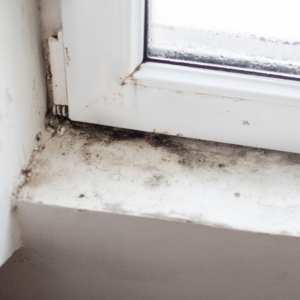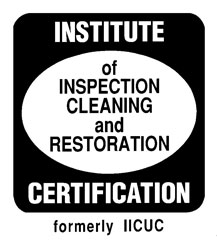One of the many services we offer is Mould Remediation, but what causes it, and how can you try to prevent it from happening in the first place?

Mould (a fungus) is caused by excess moisture, whether leaky pipes, damp basements, rain seepage, even poor insulation or ventilation. Mould fragments can cause health problems including congestion, coughing, wheezing, even chest tightness and prolonged exposures can even reduce lung function!
Mould grows when the ideal conditions are present – moisture, warm air, and materials to feed on. Drywall & wood are great sources of food for mould. Bathrooms and basements are the most common places to find mould, but when mould reproduces, spores can travel anywhere in your home. Mould spores can also come in through windows, heating vents, even on your clothing or shoes. But, they can’t grow inside unless they find the right conditions.
Mould loves spaces with lots of moisture, and little light, such as bathtubs, leaky faucets, basements, crawl spaces, etc. Mould can be black, white, spotted, or just about any color, and may appear powdery, cottony, or velvety. If you see a spot and aren’t sure if it’s an old spot of dirt or mould, it might be mould if:
- It has a musty smell.
- There’s a nearby source of moisture.
- You see warping or peeling of whatever material it’s on.
- A drop of bleach lightens it’s color in 1-2 minutes
- It will continue to grow if unchecked. Dirt/stains won’t
Difference in mould and mildew: mildew usually turns black or brown over time.
How do you PREVENT mould? It’s an inevitable part of nature and is everywhere – but you can make your home an inhospitable place for it to live. Here’s how:
- Fix water leaks immediately and use fans to thoroughly dry the area.
- Repair windows that leak or sweat as moisture can collect on the frame/windowsill
- Ensure your roof doesn’t leak
- Use a dehumidifier if you live in an area with high humidity
- Change furnace filters as often as necessary.
- Don’t install carpet in laundry rooms/basements
- Keep your home well ventilated, especially in bathrooms. Use exhaust fans venting to the outside whenever possible
- Use cleaning products that kill mould, allow shower curtains to dry
- Don’t leave wet towels in a pile or wet clothes in a washing machine – mould only needs 24 hours to proliferate
How do you get rid of mould? Call a professional if it’s a large area, or hard to reach, if you’ve had water damage, or are at high risk of symptoms due to mould spores. You can try to DIY it with commercial mould products, or a bleach/water solution of 8oz bleach per 1 gallon of water, but when in doubt, call a professional! This is one of many services we offer.
Sunrise Restorations starts by first removing all environments conducive to mould growth (moisture sources). Once moisture is gone, the mould is unable to spread to new locations. Remediation then focuses on destroying the food sources for mould (such as wood, gyprock, etc.), which must be then thoroughly cleaned and sealed to ensure that no mould survives.
When damage is severe, it may involve the removal of affected building materials, such as drywall or HEPA air filtration. We use mildewcides and sealants to remove, kill, and contain mould and spores. Mould remediation is a specialized field and should only be done with proper equipment and experience by the professionals at Sunrise Restorations for your home or business in Oliver and Osoyoos.


Recent Comments